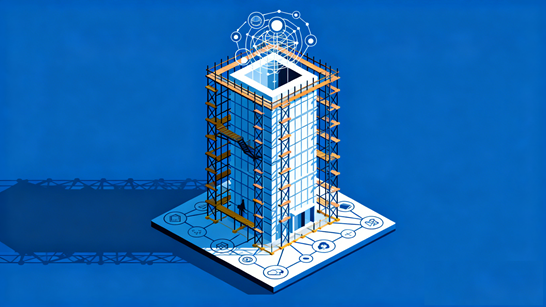The Attention Capital Investment System
Master your most valuable resource—attention. This system treats focus as finite capital to be strategically invested, protected from depletion, and deliberately restored for sustainable high performance.
The Attention Capital Investment System: Optimize Your Most Valuable Resource
In the digital economy, attention has replaced time as our most scarce and valuable resource. This system treats focus as finite capital to be strategically invested, protected from thieves, and deliberately restored for maximum cognitive returns.
The Attention Capital Framework
Four Types of Attention Capital
1. Prime Attention (Blue Chip Investments)
- Characteristics: Highest quality, limited supply, maximal ROI
- Uses: Strategic planning, creative breakthroughs, complex problem-solving
- Duration: 90-120 minute blocks, 2-3 per day maximum
- Protection Level: Maximum (digital isolation, deep work protocols)
2. Sustained Attention (Growth Investments)
- Characteristics: Reliable, consistent returns, moderate supply
- Uses: Execution work, learning, detailed tasks
- Duration: 45-90 minute blocks with breaks
- Protection Level: High (limited interruptions, batch processing)
3. Administrative Attention (Maintenance Investments)
- Characteristics: Necessary but low ROI, replenishable
- Uses: Email, meetings, routine tasks
- Duration: 30-120 minute batches
- Protection Level: Minimal (scheduled, contained)
4. Restorative Attention (Infrastructure Investments)
- Characteristics: Enables all other attention types, non-negotiable
- Uses: breaks, nature exposure, mind wandering
- Duration: 15-60 minute intentional breaks
- Protection Level: Critical (schedule as appointments)
The Attention Investment Cycle
Phase 1: Weekly Capital Allocation (Sunday)
Attention Budget Planning:
- Review last week's attention ROI metrics
- Allocate hours across four attention types
- Identify and block attention drains
- Set weekly attention investment goals
Strategic Questions:
- Where will Prime Attention yield highest returns?
- What Sustained Attention projects align with goals?
- How to minimize Administrative Attention waste?
- When to schedule essential Restorative Attention?
Phase 2: Daily Attention Execution (Monday-Friday)
Morning Prime Attention Session (8-10 AM)
- Work on highest-ROI projects first
- Implement deep work protocols
- Measure focus quality and output
Midday Sustained Attention Blocks (10 AM-12 PM)
- Execute planned work batches
- Maintain focus with strategic breaks
- Track attention endurance
Afternoon Administrative Attention (2-4 PM)
- Batch process low-cognitive tasks
- Contain attention fragmentation
- Limit exposure to attention drains
Phase 3: Attention Restoration (Daily & Weekly)
Strategic Breaks:
- Fascination breaks for passive restoration
- Physical movement for cognitive reset
- Complete mental rest for insight generation
Weekly Restoration:
- Digital sabbath or nature immersion
- Default mode network activation
- Attention capacity recovery
Attention Science Foundations
Attention Restoration Theory (ART)
Directed Attention Fatigue:
- The finite resource depleted by focused work
- Symptoms: Distractibility, impulsivity, irritability
- Recovery requires non-directed attention in restorative environments
Restorative Environments:
- Nature settings (parks, water views)
- Fascinating but undemanding stimuli
- Away from digital interruptions
Cognitive Load Theory
Intrinsic Load:
- Essential complexity of the task itself
- Managed through task breakdown and skill development
Extraneous Load:
- Unnecessary cognitive burden from poor design
- Reduced through clear instructions and environments
Germane Load:
- Productive cognitive effort for learning and creating
- Optimized through focused attention investment
Advanced Attention Management Techniques
Attention Capacity Training
Progressive Overload Principle:
- Gradually increase focused attention duration
- Start with current max minus 15 minutes
- Add 5 minutes weekly as capacity builds
- Track attention endurance metrics
Interval Training Protocol:
- 45 minutes focused / 15 minutes restorative (Beginner)
- 60 minutes focused / 15 minutes restorative (Intermediate)
- 90 minutes focused / 30 minutes restorative (Advanced)
Digital Attention Protection
Notification Management:
- Batch notification checking (3x daily max)
- Turn off non-essential notifications
- Use focus-assist features aggressively
Attention-Resistant Workspaces:
- Physical separation from digital devices
- Browser tab limits and session management
- Website blockers during Prime Attention hours
Attention ROI Metrics and Optimization
Quantitative Metrics
- Deep Work Hours: Target 15-20 hours weekly
- Context Switches: Track and minimize daily
- Flow State Frequency: Measure optimal engagement
- Attention Endurance: Focus duration before fatigue
Qualitative Assessments
- Attention Quality Scale: 1-10 rating of focus clarity
- Cognitive Freshness: Morning vs. afternoon performance
- Restoration Effectiveness: Break quality assessments
- Environmental Impact: Workspace attention support scoring
Weekly Optimization Process
- Data Collection: Gather all attention metrics
- ROI Analysis: Identify highest-return activities
- Capital Reallocation: Adjust next week's attention distribution
- System Refinement: Improve protocols based on results
Implementation Roadmap
Month 1: Foundation Building
- Establish attention tracking habits
- Implement basic protection protocols
- Build awareness of attention patterns
- Create attention-supporting environment
Month 2: Capacity Development
- Progressive attention endurance training
- Advanced digital protection strategies
- Optimized break and restoration protocols
- Refined attention allocation system
Month 3: Mastery and Automation
- Attention management becomes habitual
- Intuitive capital allocation decisions
- Sustainable high-performance patterns
- Teaching and mentoring capability
Stop managing your time and start investing your attention. Click "Use This Template" to transform how you allocate, protect, and optimize your most valuable cognitive resource.
Open Schedule Maker to customize and export.

The Deep Work Time Blocking Schedule
Master your workday with this free Time Blocking template. It uses the principles of Deep Work and energy management to structure your day for maximum focus and productivity. Perfect for developers, writers, and knowledge workers.
View details

The Digital Nomad Nervous System Optimizer
Optimize your nervous system for the digital nomad lifestyle. This neuroscience-based system addresses the unique cognitive challenges of location-independent work, from environmental adaptation to distributed presence management.
View details

The Knowledge Architecture Engineering System
Engineer robust knowledge architectures that withstand academic pressure. This system uses cognitive science principles to build interconnected knowledge frameworks, optimize neural pathways, and create durable academic understanding.
View details
